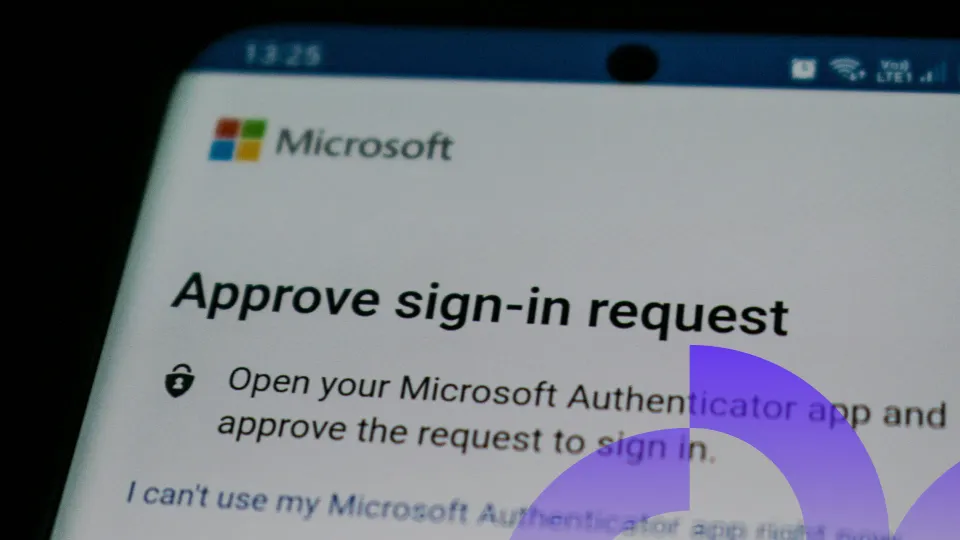Microsoft MFA: The Critical Role of Multifactor Authentication in Security
Microsoft's decision to enforce Multifactor Authentication (MFA) for all users. Since October 15, 2024, anyone signing into the Azure portal, Microsoft Entra admin center, and Intune admin center will need to have MFA enabled. This blog will break down what this change means, why it matters, and how you can get prepared.
This blogpost explores the critical role of MFA in security, details about Microsoft's upcoming MFA enforcement, implications for Managed Service Providers (MSPs) and partners, and actionable steps to strengthen your security posture.
The Critical Role of MFA in Security
So, why is MFA so important? Think of it as adding an extra layer of protection to your online accounts. Instead of relying solely on a password (which can be compromised), MFA requires you to provide additional verification factors before granting access.
Here's how MFA enhances security:
- Something You Know: Your password or a PIN.
- Something You Have: A smartphone or a hardware token.
- Something You Are: Biometric data like your fingerprint or facial recognition.
By combining these factors, we make it significantly harder for unauthorized individuals to access your account, even if they've somehow obtained your password.
Benefits of Implementing MFA
- Enhanced Security: Significantly reduces the risk of unauthorized access, even if a password is compromised.
- Compliance: Meets industry regulations and standards that mandate MFA for data protection.
- User Convenience: Modern MFA solutions offer quick and user-friendly authentication methods.
- Adaptability: Supports various authentication methods to suit different user preferences.
- Reduced Phishing Risk: Adds hurdles for attackers attempting to breach accounts through phishing attempts.
By combining these factors Microsoft make it significantly harder for unauthorized individuals to access your account, even if they've somehow obtained your password. As Microsoft states, MFA can block over 99.9% of account compromise attacks.
What's Changing with Microsoft's MFA Enforcement
Let's break down what this enforcement means for you:
- Affected Platforms: Azure portal, Microsoft Entra admin center, Intune admin center.
- Deadline: Since october 15, 2024.
- Who Needs to Act: Everyone using these platforms—including partners and clients.
This initiative is part of Microsoft's broader commitment to security. The company emphasizes a "Zero Trust" approach, which assumes that threats can come from anywhere and requires strict verification for every user and device trying to access resources on a network.
What This Means for MSPs and Partners?
If you're a Managed Service Provider (MSP) or a partner—especially within the Cloud Solution Provider (CSP) program—there are some key points to be aware of.
Azure Subscription Management Changes
- Inactive Subscriptions: Starting in November 2024, we'll begin blocking and eventually deleting Azure subscriptions that haven't been active for over 12 months.
- Notification Process: You'll receive a notice 30 days before any action is taken. Subscriptions will be deleted 90 days after being blocked.
- Action Needed: Regularly review your subscriptions to ensure they're active if you wish to keep them. More details can be found in our official documentation.
Eligibility for Credits
- Effective Date: As of September 3, 2024, partners must have MFA enabled for all administrative users.
- Why This Matters: This is a requirement to be eligible for a one-time discretionary credit review in cases of fraudulent Azure activity.
- Shared Responsibility: Securing the ecosystem is a collective effort, and enabling MFA is a crucial part of that.
New Security Roles
Microsoft has introduced new roles to help you manage security more effectively:
- Security Administrator: Can manage security settings, policies, and alerts.
- Security Reader: Has view-only access to security information.
- Transition Plan: Access for Admin Agents will be phased out gradually.
Next Steps: Transition to new roles promptly to maintain seamless security management.
How to Enable MFA
Setting up MFA is straightforward and significantly enhances your organization's security.
Steps to Get Started:
- Set Up MFA: Follow this step-by-step guide to enable MFA for your organization.
- Manage Settings: Need to reset or update your MFA settings? Learn how here.
- Explore Enhanced Solutions: Check out the MFA options available.
Strengthening Your Security Posture
While enabling MFA is a significant step, it's important to consider additional measures to fortify your organization's defenses. Here are some actionable steps:
Review Security Roadmaps
Microsoft's Security Guidance:
- Microsoft's Security Guidance: Microsoft provides comprehensive security guidance to help organizations adopt a Zero Trust security model. You can explore resources on the Microsoft Security website, which offers insights into best practices and strategies for enhancing your security posture.
Leverage Cybersecurity Tools
- Utilize Microsoft's Cybersecurity Resources: Microsoft offers a suite of cybersecurity tools and services designed to protect against evolving threats. These include Microsoft Defender for Cloud, Azure Security Center, and Microsoft Sentinel. Visit the Microsoft Security Solutions page to learn more about these offerings.
Attend Training Sessions
- Microsoft Partner Training: Microsoft provides training and certification programs for partners to stay updated on the latest technologies and best practices. You can access these resources through the Microsoft Partner Network.
Access Partner Resources
- Partner Resources and Support: The Microsoft Partner Network offers a range of resources, including documentation, support, and community forums, to help partners secure both their own environments and those of their customers.
Conclusion
Implementing MFA is more than just complying with a new requirement—it's about taking proactive steps to protect your organization and those you serve. Think of it like fastening your seatbelt when you get into your car; it's a simple action that provides significant peace of mind.
By embracing these changes, we're working together to make our digital environment more secure for everyone.
Need Help?
If you have questions or need assistance with MFA implementation, please contact our support team. We're here to help you navigate these changes smoothly.
Source:
- https://learn.microsoft.com/en-us/entra/identity/authentication/tutorial-enable-azure-mfa
- https://learn.microsoft.com/en-us/entra/identity/authentication/howto-mfa-userdevicesettings
- https://techcommunity.microsoft.com/blog/identity/your-paword-doesnt-matter/731984
- https://www.microsoft.com/en-us/security
- https://learn.microsoft.com/en-us/partner-center/announcements/2024-august#monthly-update-important-actions-partners-need-to-take-to-secure-the-partner-ecosystem
- https://learn.microsoft.com/en-us/partner-center/announcements/2024-september#monthly-update-important-actions-partners-need-to-take-to-secure-the-partner-ecosystem
